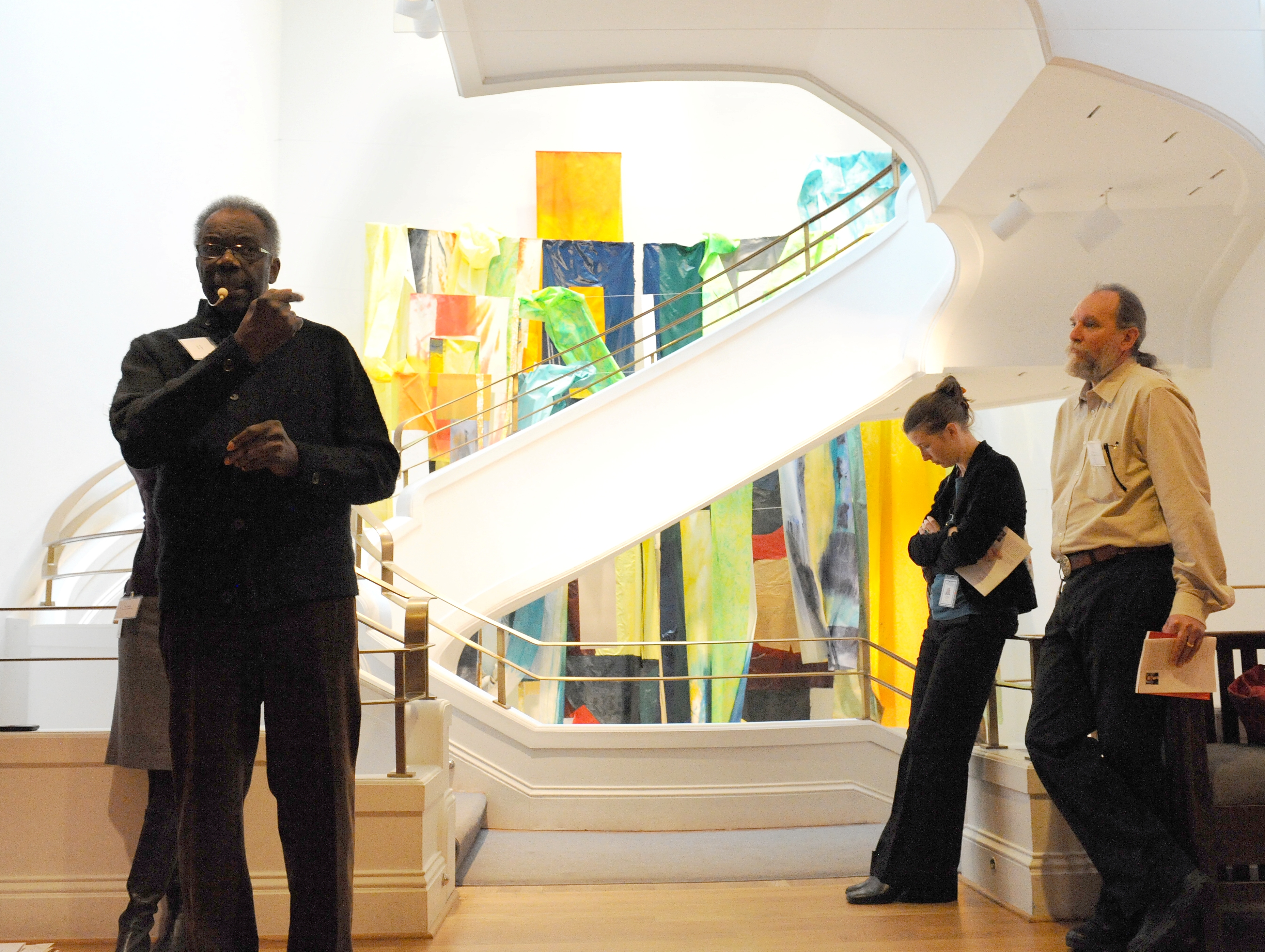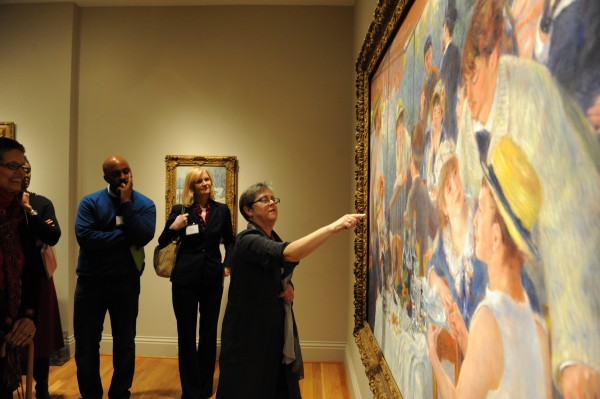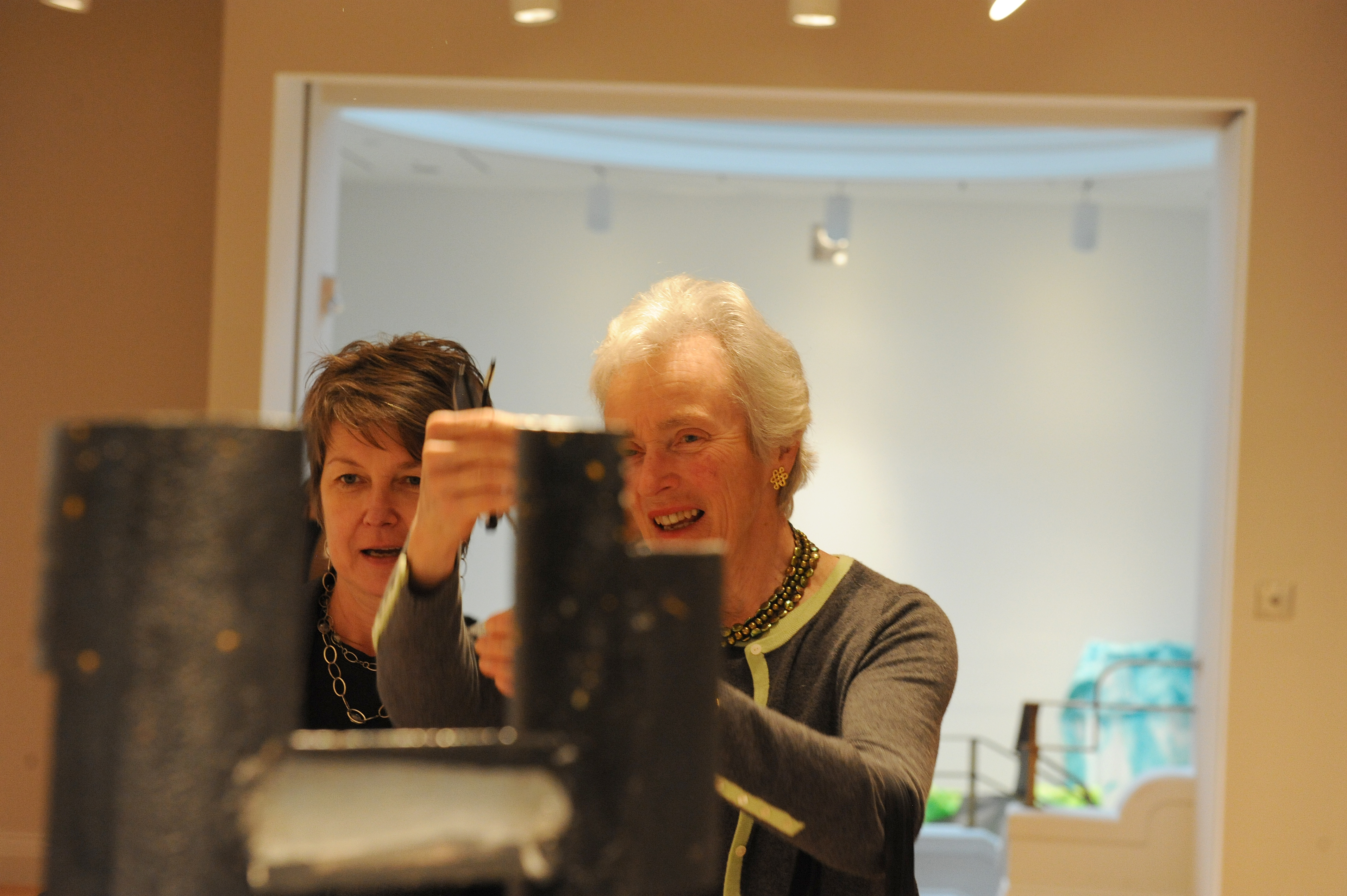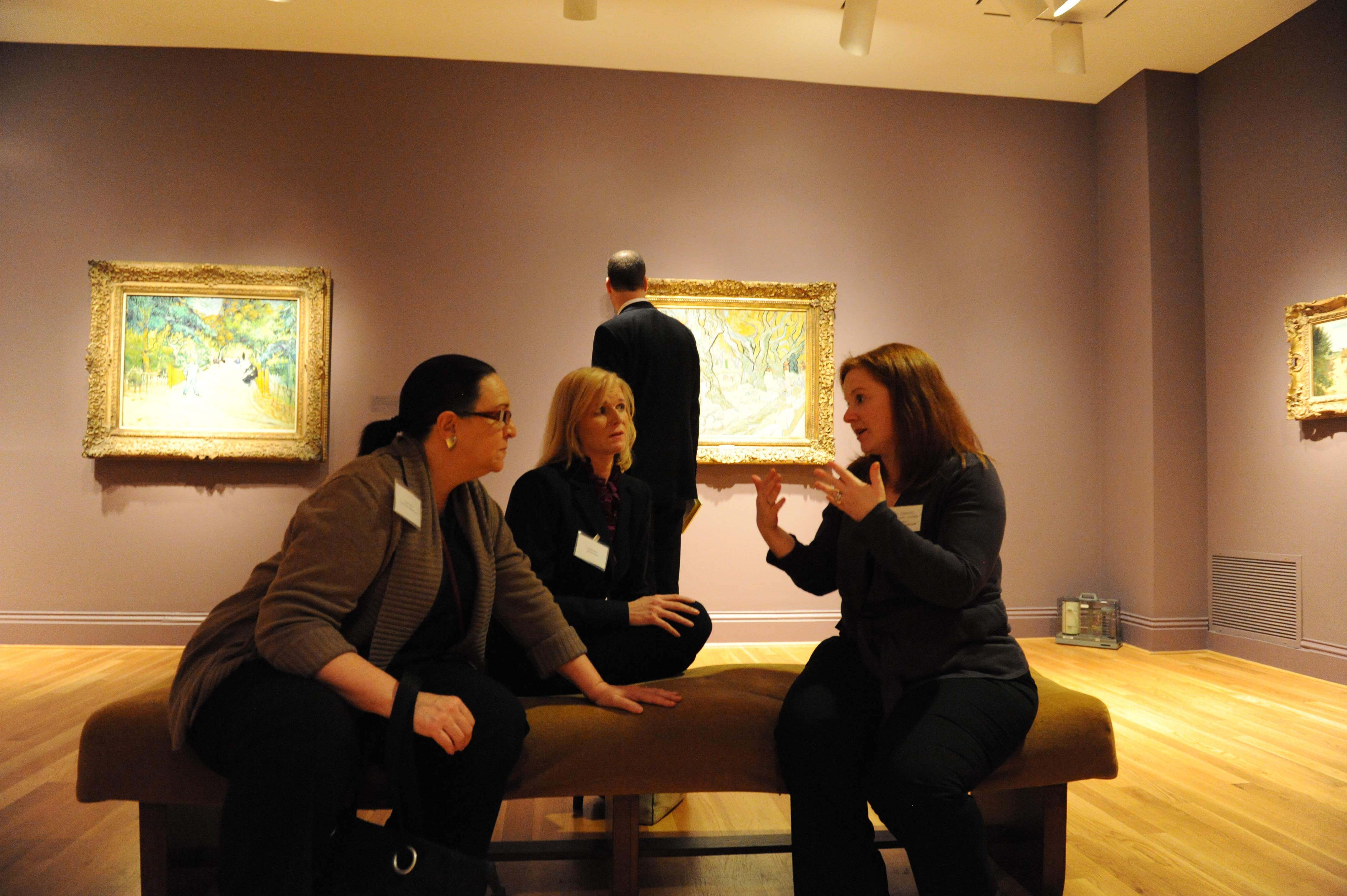I’ve never had a great deal of patience. I like structure and thrive on organization. In my opinion one of the greatest gifts my fiancé has given me (besides the engagement ring and the promise to live happily ever after, of course) was a label maker. So, when I was asked to be one of the organizers of a program that aimed to create a profound experience of art through “slow looking,” I got a little nervous.The second annual Art & Innovation Design Gathering held on Monday, March 14, at the museum, was a collaboration between the University of Virginia and The Phillips Collection. We encouraged the scientists, artists, educators, and students who participated in the conference to think about how we perceive our visual world. How do our experiences affect the way we see the world? Have our preconceptions – whether you’re aware of them or not, constructed from experience – replaced our ability to visually interpret? The balance of disciplines represented at the conference helped to bring these ideas together in a relatable way.
The artists of the group recognized the importance of losing your preconceptions and harnessing the ability to accept the moment, accept change, and let the experience be what it is, for you. Artist Sam Gilliam referred to this as “sailing” – being able to reconstruct one’s self through this notion of simplicity. Of course, not everyone buys into this. Former New Yorker staff writer, Lawrence Weschler, talked about his relationship with the artist Robert Irwin, and how Weschler’s “loose synapsed moments” as he calls them – that is, his moments of free-association – used to really irritate Irwin. He would encourage Weschler to experience the work for what it is, or to use Gilliam’s metaphor, to “sail.” Weschler didn’t seem to me to have the personality to support Irwin’s advice. His essays on convergences, examples of which he discussed at the conference, explain that our visual perceptions rely precisely on our prior visual experiences.
The scientists of the group, such as Dennis Proffitt, professor of psychology at the University of Virginia, supported the idea that it is in our experiences where we find the ability to understand the world around us, and our abilities of perception are perhaps predetermined, strictly biological. In other words, we have such a conscious awareness of space and our own physicality that in order to understand what we see, we must be able to understand ourselves in relation to space, and be able to create the experience. He related these ideas to the David Smith exhibition, on view at the museum, where the artist’s playful relationship between concave and convex forms challenge the viewer’s ability of perception. In observing the shapes and forms of Smith’s sculptures, our perception of the forms is contingent upon our location in relation to the work (for instance, should the lighting change we may not see what is truthfully a convex shape, but rather, a concave one). We believe what we see, we don’t see what we believe.
The discussion session at the end of the day revealed consensus in response to the questions of the day, and to the question of how these ideas of perception and slow looking have resonance in our daily lives and in our world. In an idea-generating economy, we are reliant upon innovation to move us forward. Creativity is the catalyst in this process. I have to say I left the conference feeling inspired (and no longer nervous about my compulsive need for structure). I wanted not only to begin to get my hands dirty with this idea of creativity as the catalyst of innovation and new ideas, but also to surmount my museum professional angst: the sadly common, perpetual disconnect from the works hanging on the walls. I can’t help but consider, then, the seemingly contradictory idea: if we all find a way to slow down, then could we find a way to move forward?
Megan Clark, Manager of Center Initiatives

Vice Provost for the Arts at the University of Virginia and former Senior Curator at The Phillips Collection, Beth Turner, leads a discussion on Renoir’s Luncheon of the Boating Party (Photo by James Brantley)




In the book “Proust was a Neuroscientist”, the author, Jonah Lehrer, has a chapter on Cezanne that has insights into how to look and better understand the unique mindset and goals of his painting. Slow looking is all about how we perceive what we see.
Pingback: Controlled Chaos « ModernCity